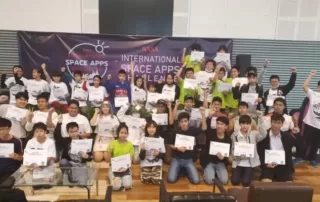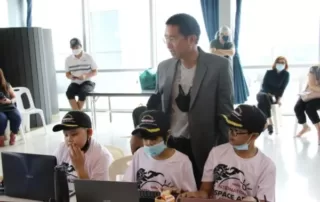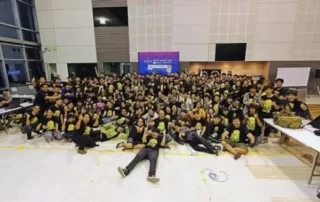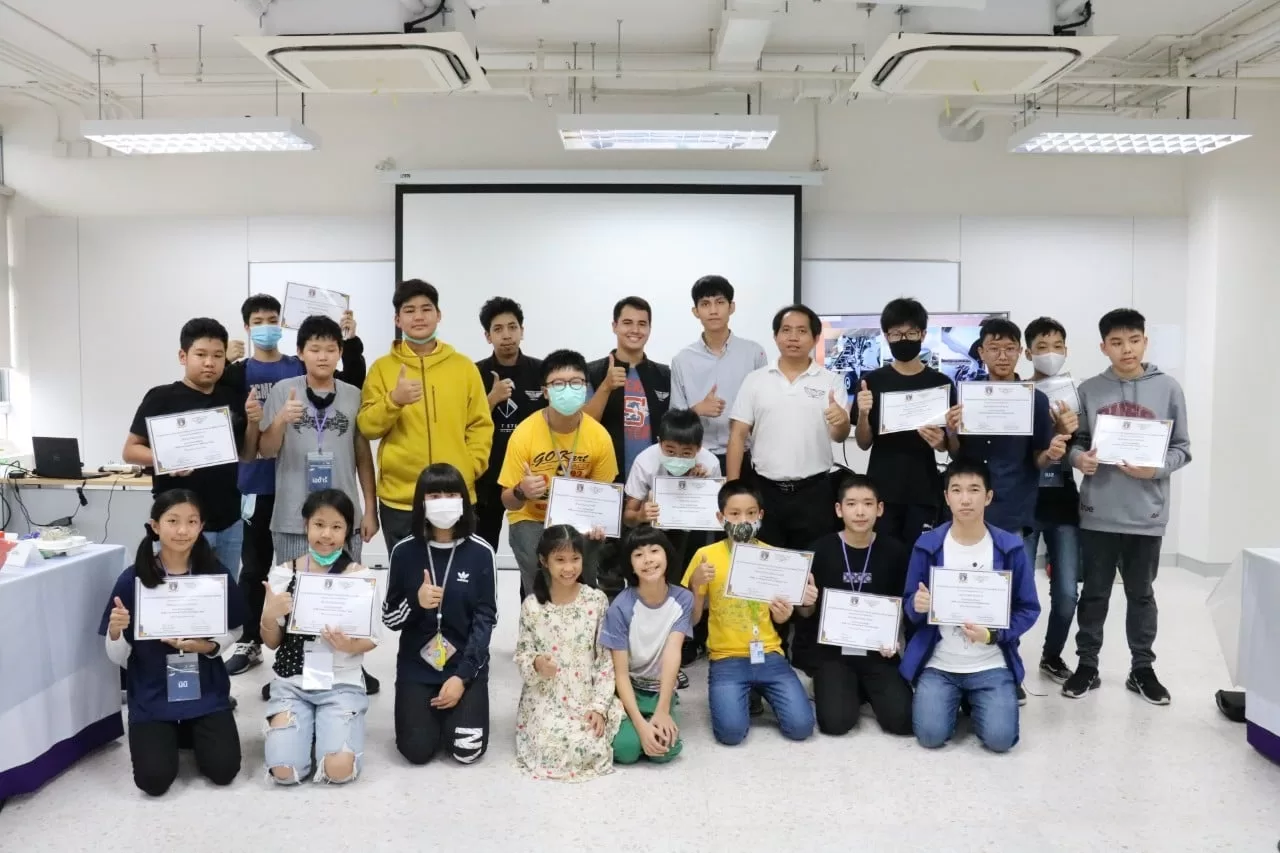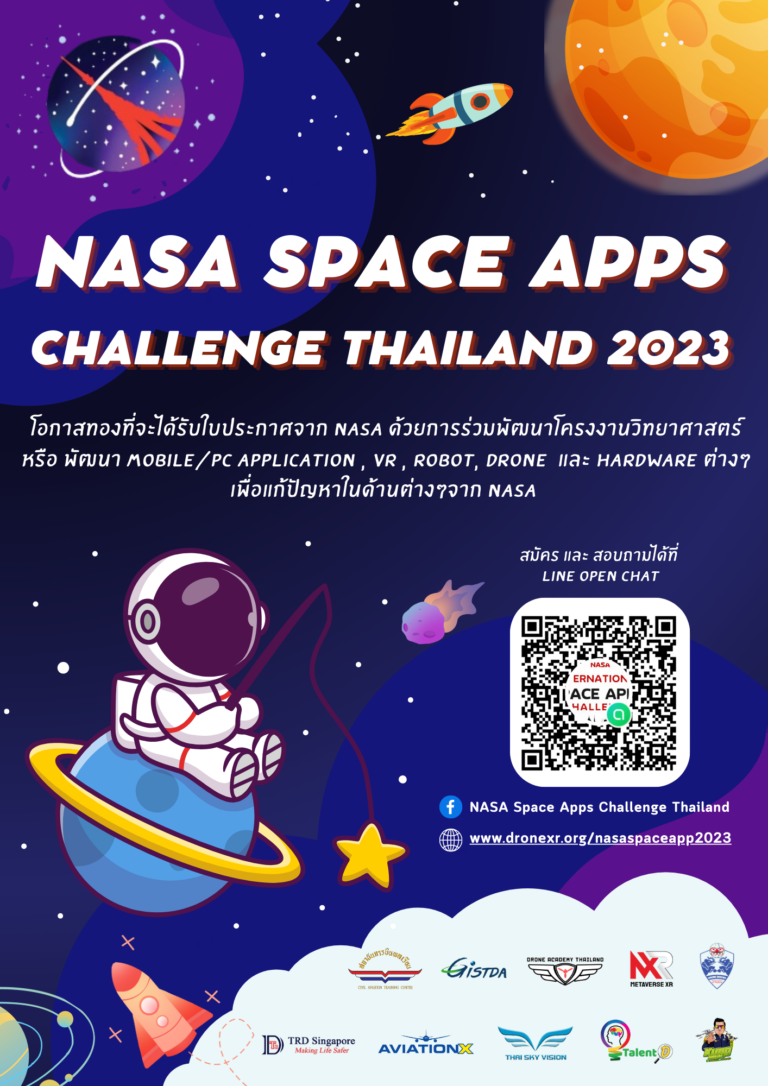
กติกาการเข้าร่วมการแข่งขันและการใช้ Openchat ประจำการแข่งขัน
การแข่งขันนี้ทางทีมงานผู้จัดและกรรมการไม่ได้งบสนับสนุนจากหน่วยงานรัฐหรือเอกชนจากภายนอก ได้รับเพียงการสนับสนุนการประชาสัมพันธ์
ทีมงานผู้จัดทุกคนสละเวลาและวันหยุดจัดกิจกรรมเพื่อให้เยาวชนของไทยได้มีโอกาสดีๆ ในกิจกรรมดังกล่าว ท่านโปรดเข้าใจและเห็นใจทีมงาน ขออภัยหากมาตรฐานยังไม่เป็นไปตามที่ท่านคาดหวัง
โปรดติดต่อทีมงานด้วยความสุภาพและรักษามารยาทที่ดี เข้าใจในความเสียสละและจิตสาธารณะ หลีกเลี่ยงการสร้างปัญหาใดๆ โปรดเคารพในกฎหมู่ มีมารยาททีดีและปฏิบัติตามระเบียบต่อไปนี้อย่างเคร่งครัด
1. หากท่านไม่สามารถเดินทางมารับใบวุฒิบัตรสำหรับการแข่งขันจะไม่ได้รับอนุมัติในการเข้าร่วมการแข่งขันในทุกกรณี สำนักงานผู้จัดการแข่งขัน ( ณ. เมืองทองธานี จังหวัด นนทบุรี)
2. ไม่โพสต์ข้อความที่เป็นร้องเรียน เรื่องที่เป็นลบ เรื่องส่วนตัวในห้องรวม หรือ เรื่องและเนื้อหาใดสร้างความเสียหาย หรือทำลายภาพลักษณ์ที่ดีต่อการแข่งขันในห้องนี้
โปรดติดต่อช่องทาง LINE OA หลักของทางทีมงานผู้จัด LINE ID: @droneacademy เท่านั้น หากพบการละเมิดใดจะแบนออกทันทีโดยไม่แจ้งให้ทราบล่วงหน้า
3. เคารพให้เกียรติผู้จัดการแข่งขัน และกรรมการ ไม่สร้างบรรยากาศที่เป็นลบหรือทำลายบรรยากาศที่ดีในการแข่งขัน หรือการอยู่ร่วมกันในสังคมที่ดี
4. ผู้ปกครองหรือเยาวชนที่เข้าร่วมทุกคนที่สมัครเข้ามาต้องศึกษารายละเอียดการแข่งขันให้ครบถ้วน dronexr.org/nasaspaceapp2023 หลีกเลี่ยงถามข้อมูลซ้ำโดยที่ไม่ศึกษารายละเอียดต่างๆไว้ก่อนแล้ว
5. ผู้สมัครใดๆที่สมัครเข้ามาจะไม่ได้รับการยืนยันเข้าร่วมหากมีประวัติหรือพฤติกรรมขัดแย้งกับการเป็นผู้เข้าร่วมการแข่งขันที่ดีเช่น มีการพูดจาไม่เหมาะสม , พฤติกรรมก้าวร้าว ไม่เคารพทีมงานหรือกรรมการ มาก่อน
6. การตัดสินของกรรมการและคณะจัดการแข่งขัน ถือเป็นอันสิ้นสุด ไม่สามารถโต้แย้งใดๆ
7. หากพบการทุจริตเช่นการไป Copy งานและไม่มีการอ้างอิงที่มาของ Code หรือสิ่งที่นำมาใช้ในผลงานท่านจะถูกตัดสิทธิ์ในการแข่งขันทันที
8. การใช้คำพูดวาจา หรือพฤติกรรมไม่สุภาพใดๆ ต่อผู้จัดการแข่งขัน และกรรมการท่านจะถูกตัดสิทธิ์การแข่งขันทันที
9. หากท่านถูกตัดสิทธิ์แล้วไม่มีสิทธิ์ในการรับใบวุฒิบัตรใดๆทั้งจากผู้จัดและจาก NASA ทั้งสิ้น หากต้องการขอความอนุเคราะห์
โปรดติดต่อทีมผู้จัดด้วยความสุภาพ
10. ไม่ Promote กิจกรรมใดๆที่ไม่ใช่ของผู้จัดการแข่งขันโดยไม่ได้รับอนุญาต
11.หากสมาชิกคนหนึ่งคนใดของทีมทำผิดกติกาข้างต้นจะถูกเพิกถอนสิทธิ์ในการแข่งขั้นทั้งหมดทั้งทีม
Space Apps คืออะไร?
NASA International Space Apps Challenge (Space Apps) เป็นงานแฮ็กกาธอนระดับนานาชาติสำหรับนักเขียนโค้ดนักวิทยาศาสตร์ นักออกแบบ นักเล่าเรื่อง ผู้ผลิต ผู้สร้าง นักเทคโนโลยี และอื่นๆ ในเมืองต่างๆทั่วโลก โดยที่ทีมต่างๆ จะเข้าร่วมกับ National Aeronautics and Space Administration (NASA’s) ฟรี และเปิดข้อมูลเพื่อแก้ไขปัญหาในโลกแห่งความเป็นจริงบนโลกและในอวกาศ
ธีมความท้าทายของ NASA International Space Apps Challenge ปี 2023 คือ “Explore Open Science Together” ที่ Space Apps เรามุ่งมั่นที่จะก้าวข้ามอุปสรรคในการเข้าถึงโอกาสด้านอวกาศและวิทยาศาสตร์ Space Apps สำหรับทุกคน! ผู้เข้าร่วมจากทั่วโลกให้ความต้อนรับโดยไม่คำนึงถึงภูมิหลังและประสบการณ์ในการคิด สำรวจ เรียนรู้ และสร้างร่วมกัน ในแต่ละปี Space Apps Challenge เรายังคงสนับสนุนและส่งเสริมแนวคิดผ่านนวัตกรรม
ร่วมพัฒนา Application บน Computer, Mobile, VR และ Hardware ต่างๆสำหรับแก้ไขปัญหาในด้านต่างๆที่ทาง NASA กำหนดภายในระยะเวลา 48 ชั่วโมง
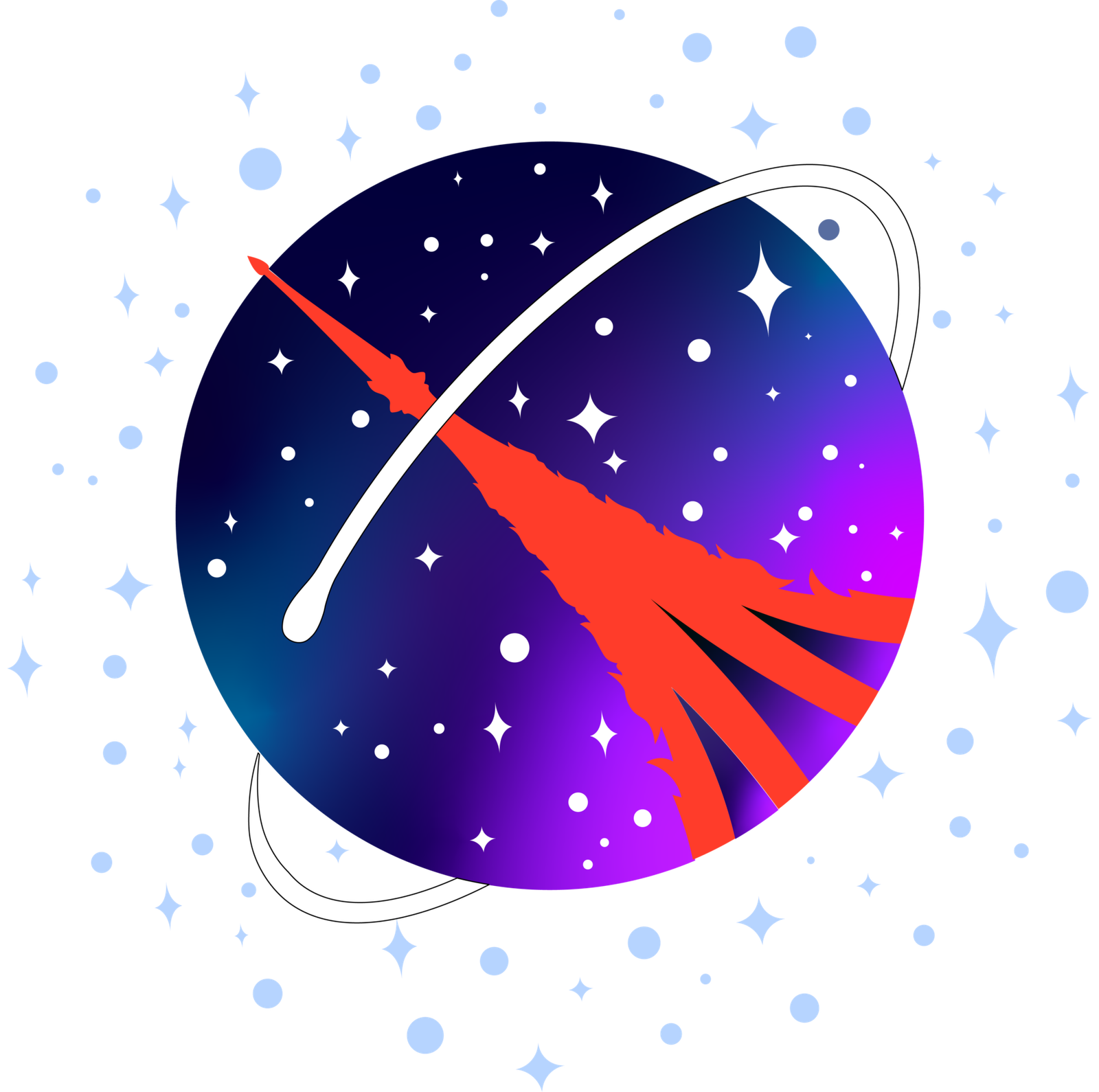

กำหนดการสำคัญ/Important Date
เลือกหัวข้อ Challenge ที่เราสนใจจะทำ ผู้ที่ลงทะเบียนแล้วจะได้รับ E-mail จาก Global Organizing Team เมื่อประกาศ Challenge เหล่านี้
เตรียมพร้อมตัวเองสำหรับงาน NASA Space Apps Challenge
- 09.00 – 09.30 : Opening ceremony
- 09.30 – 10.30 : Hackathon begins
- 12.00 – 12.45: Lunch break
- 13.00 – 14.00: Project Update #1
- 17.00 – 18.00: Project Update #2 + Day event closing
- 9:00 - 9.30: จับฉลากลำดับการนำเสนอ
- 9.30 - 15:00 : Teams finalize their projects and ready for presentations
- 12.00 – 12.45: Lunch break
- 15.30 - 18.00: 15 Team presentations 150 mins ( 10 mins / team)
- 15.30 - 16:10: Team1 - Team4
- 16.10 - 16.50: Team5 - Team8
** 10 Mins Break **
- 17.00 - 17.40: Team9 - Team12
- 17.40 - 18.10: Team13 - Team15
- 19.00 - 20.00: Closing ceremony
- 20.00- 23.59: Project Submission
- 11.00 - 12.30 รับใบประกาศณียบัตรพร้อมกัน ณ ศูนย์ประชุมสิริกิติ์
แต่งกายด้วย เสื้อ NASA ที่ทุกท่านได้ไป
โครงการ Space Apps Challenge สมัครที่ไหน?
Space Apps 2023 จะจัดขึ้นในวันที่ 7 – 8 ตุลาคม 2023โดยผู้สนใจสามารถลงทะเบียนเพื่อเข้าร่วมงานการแข่งขันได้ที่ปุ่ม Register ด้านล่างนี้
โครงการ Space Apps Challenge จัดที่ไหน?
แข่งขันผ่านระบบออนไลน์ : Virtual Meeting
ผู้เข้าร่วมจะได้รับอะไรในการเข้าร่วมการแข่งขัน
ผู้เข้าร่วมการแข่งขันทุกท่าน หลังจบการเข้าร่วมแล้ว สามารถมีสิทธิที่จะได้รับใบวุฒิบัตร ที่ได้รับการรับรองโดย National Aeronautics and Space Administration (NASA) ประเทศสหรัฐอเมริกา


เสื้อประจำการแข่งขันปี 2020-2023
(แบบอื่นๆ จะ Update ในอนาคต)
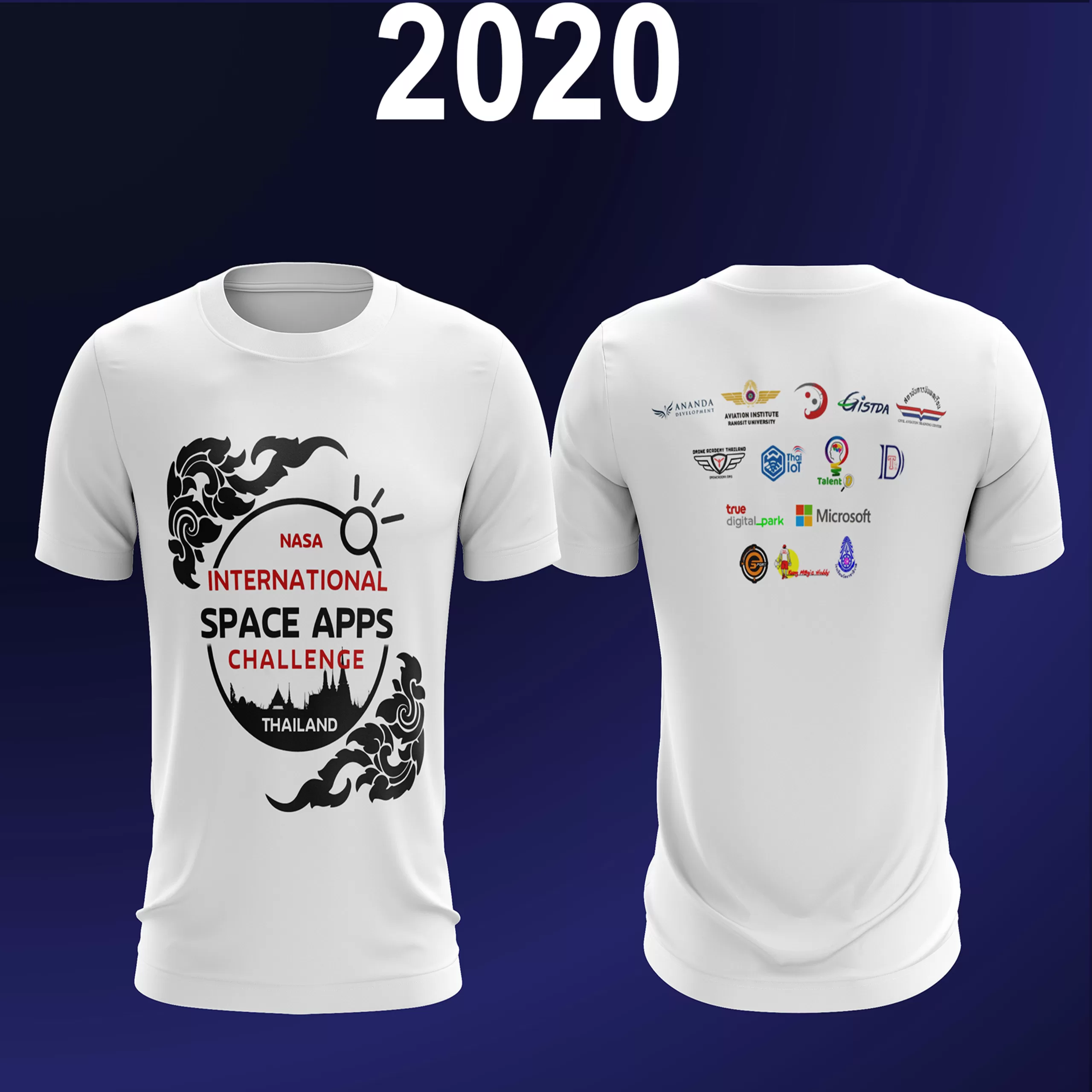

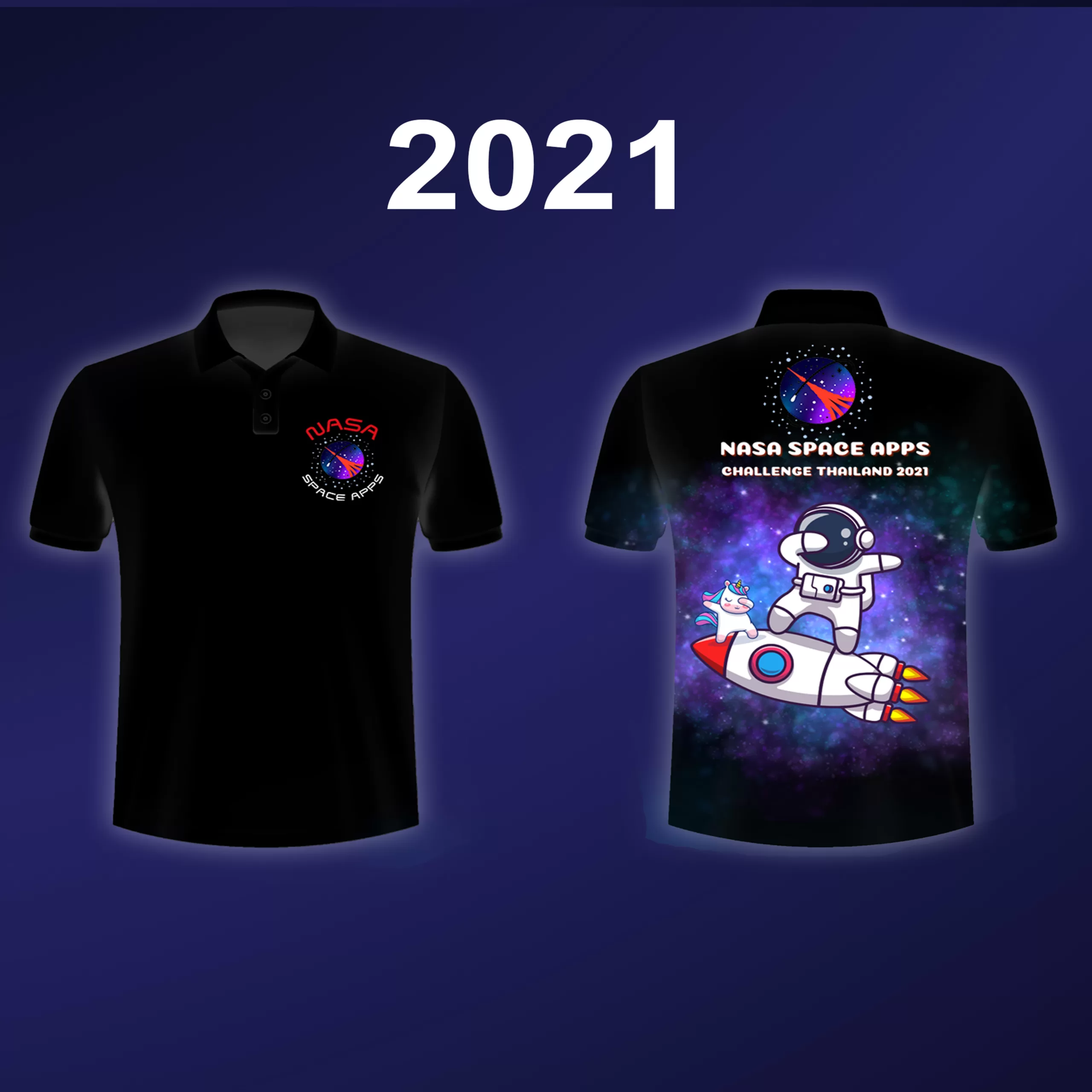

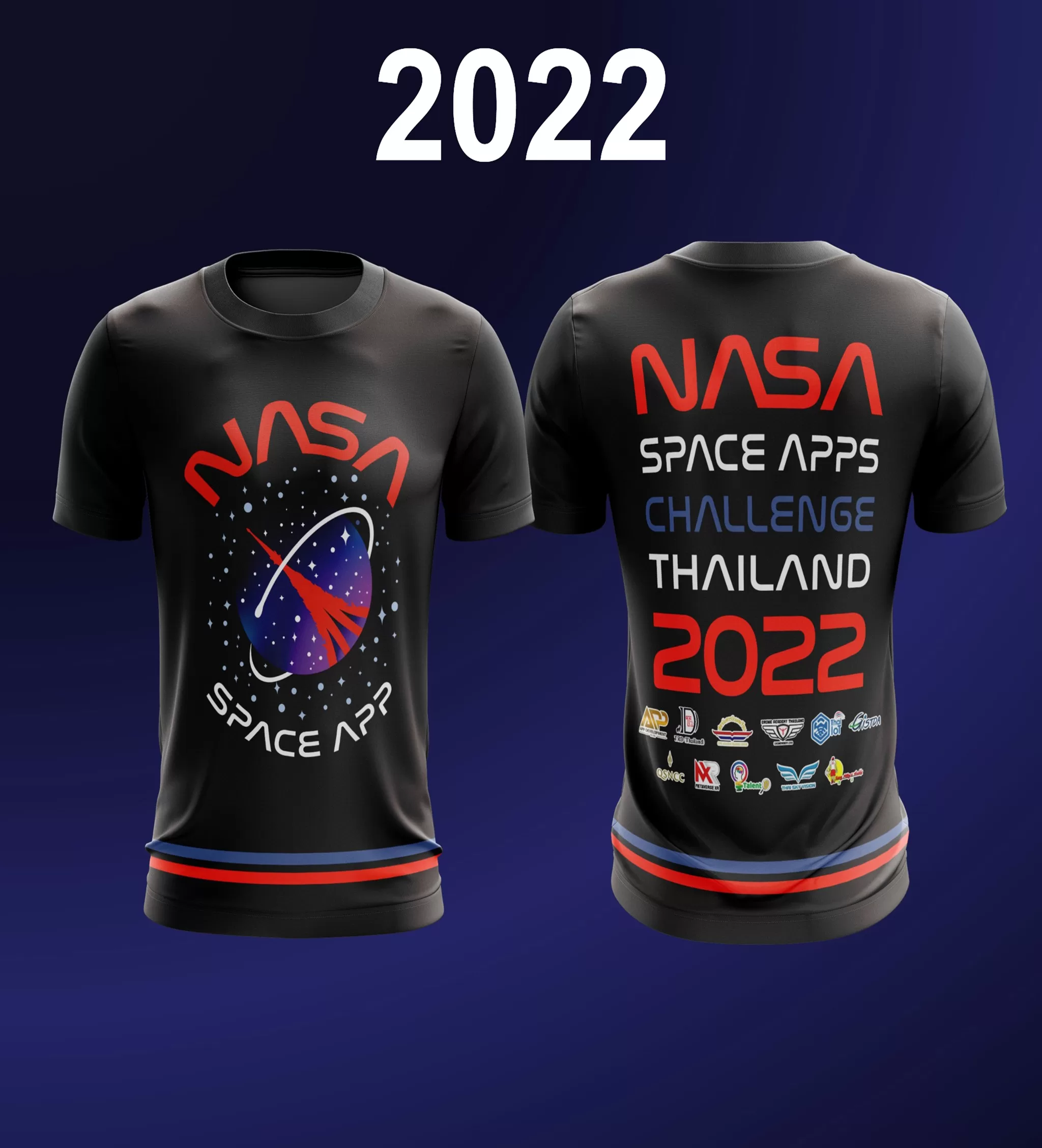



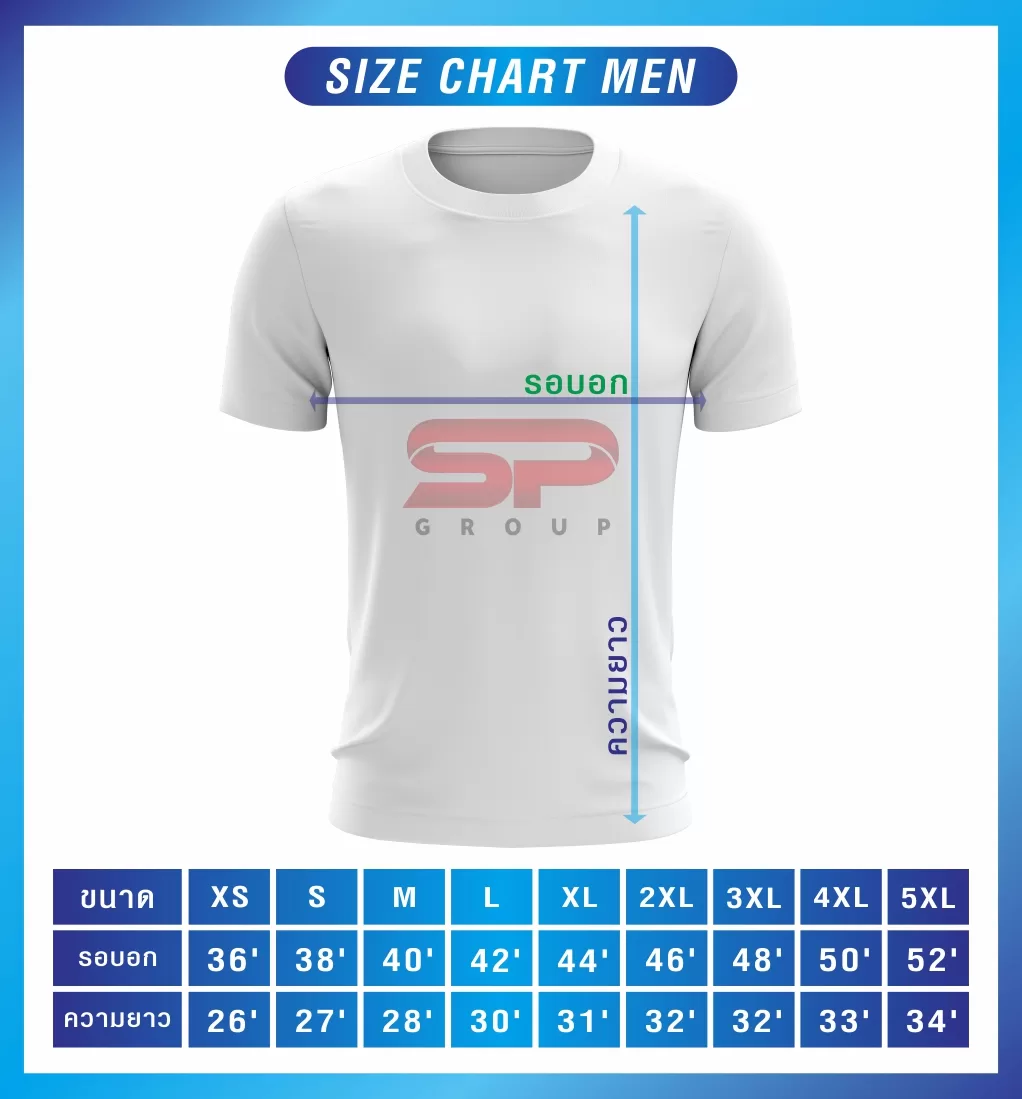

หัวข้อ Challenge การแข่งขัน
Explore Open Science Together


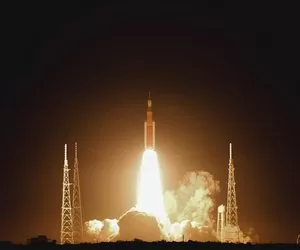

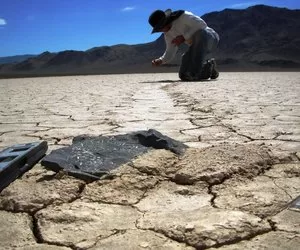



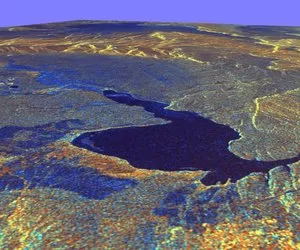



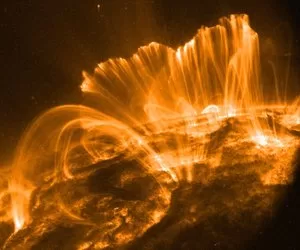



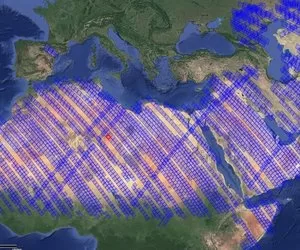

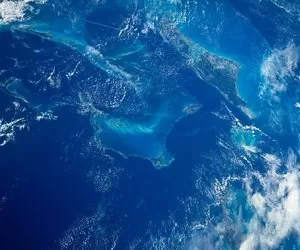

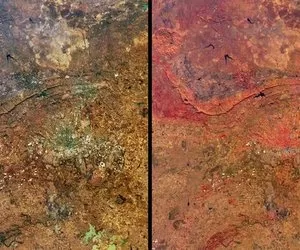









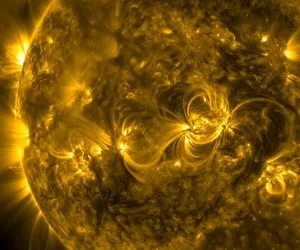

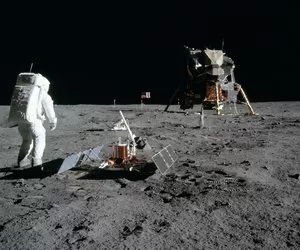

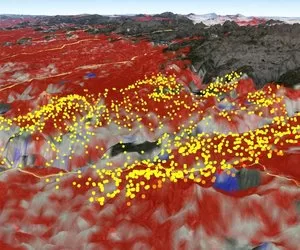



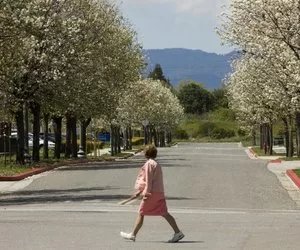







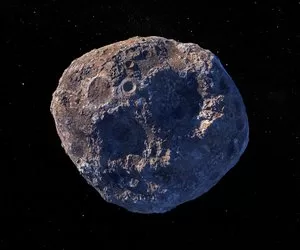

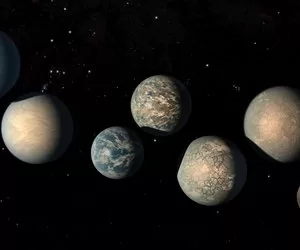





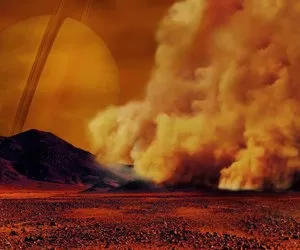







ติดตาม / สอบถามการแข่งขัน
Drone Academy Officials
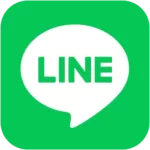

LINE: @droneacademy
ผู้ชนะรางวัล NASA Space Apps Thailand ในปี 2023
1. ระดับอุดมศึกษา GALACTIC Promblem-Solver (สำหรับผู้เข้าร่วม)
ผู้ชนะเลิศได้แก่ ทีม 404
2.ระดับม.ปลาย GALACTIC Senior high school Academic
อันดับที่1 : Stellar Eagle
อันดับที่2 : Ipaosanglui
อันดับที่3 : 6G
2.1ระดับม.ปลาย GALACTIC Promblem-Solver (สำหรับผู้เข้าร่วม)
RockZy
Nasean
Hello Verse
Little Light
Dream Grab Star
SOVIKUL
3. ระดับม.ต้น GALACTIC junior high school Academic winner
อันดับที่1 : AstroNASABot
อันดับที่2: Stellar Dwellers
อันดับที่3 : Rubinte
3.1ระดับม.ต้น GALACTIC Promblem-Solver (สำหรับผู้เข้าร่วม)
ผู้ชนะเลิศ ได้แก่ ทีม Viridian
4.ระดับประถม GALACTIC Promblem-Solver (สำหรับผู้เข้าร่วม)
ผู้ชนะเลิศ ได้แก่ ทีม Mission To NASA with WTP
คำถามที่พบบ่อย
1. เป้าหมายของ Space App คืออะไร
- เพื่อสร้างแรงบันดาลใจในการทำงานร่วมกัน, ความคิดสร้างสรรค์ รวมไปถึงการคิดเชิงลึก
- เพื่อเสริมสร้างความสนใจที่มีต่อวิทยาศาสตร์และการสำรวจอวกาศ
- เพื่อเพิ่มความตื่นตัวต่อข้อมูลของนาซ่า
- เพื่อพัฒนาตัวนักวิทยาศาสตร์ นักเทคโนโลยี วิศวกร รุ่นต่อๆไป
2. วันงานสำคัญต่างๆ
- มีการให้ข้อมูลสรุปของความท้าทายและสามารถดูได้ที่ 2023.spaceappschallenge.org/challenges/
- ในวันที่ 8 กันยายน ความท้าทายทั้งหมดจะปรากฏให้เห็น
- ภายในกลางเดือนกันยายน ข้อความท้าทายทั้งหมดและแหล่งข้อมูลจะเผยแพร่บนเว็บไซต์ เริ่มคิดถึงความท้าทายที่คุณต้องการจัดการ!
- วันที่ 22 กันยายน การฝึกปฏิบัติเสมือนจริงจะเริ่มขึ้น และ Rocket Chat จะเปิดขึ้นเพื่อให้สามารถเข้าถึงข้อมูลเพิ่มเติมและการสร้างทีมได้
- 07 ตุลาคม 23 เวลา 09:00 เริ่มแข่งขันงาน Hackathon ทีมสามารถ ส่งงาน ได้ผ่านเวป www.spaceappschallenge.org
- 08 ตุลาคม 23 เวลา 11:59 อัพเดโปรเจคของคุณบนหน้าเว็ป Space App
- ตุลาคม – ธันวาคม: การตัดสินและประกาศผู้ชนะระดับโลก
ผู้เชี่ยวชาญจาก NASA และหน่วยงานด้านอวกาศที่เป็นพันธมิตรของเราจะประเมินโครงการและเลือกผู้ชนะ
ทีมของคุณจะได้รับการแจ้งเตือนหากคุณได้รับเลือกให้เป็นผู้เข้ารอบสุดท้ายหรือผู้ชนะ ขอให้โชคดี!
3. ฉันจะลงทะเบียนได้อย่างไร
- ติดต่อ LINE ID: @droneacademy
4. อายุเท่าไหร่เข้าร่วมได้
- แนะนำ 10 ปีขึ้นไป แต่หากอายุต่ำกว่านั้นต้องสามารถทำโปรเจ็คด้วยตนเองได้
5. เมื่อสมัครแล้วจะต้องทำอะไรต่อ
- หากกรอกแบบฟอร์มเรียบร้อยแล้วให้ยืนยันการสมัครในช่องแชทไลน์อีกครั้งด้วยชื่อ-นามสกุลของตนเอง
- หลังจากปิดการรับสมัครแล้วทางผู้จัดจะส่งอีเมลเพื่อใช้ส่งโปรเจ็คภายใน 2-3 วันทำการ
6. จะมีลิ้ง Zoom ส่งมาตอนไหน
- หลังจากปิดรับสมัครแล้วทางทีมผู้จัดจะติดต่อไปและจะได้รับลิ้งซูม ภายใน 1-2วันก่อนการแข่งขัน
7. การแข่งขันต้องมาทำงานในสองวันเท่านั้นหรือเวลาจะพอทำไหม?
- สามารถเลือกหัวข้อ คิดโปรเจ็ค และทำสไลด์ล่วงหน้าก่อนวันแข่งขันได้
8. สามารถแข่งขันเดี่ยวได้ไหม?
- คุณสามารถทำงานคนเดียวได้, อย่างไรก็ตาม เราแนะนำให้ทำงานเป็นทีมเพราะแต่ละคนจะมีความสามารถที่แตกต่างกัน ซึ่งมันจะเป็นการสงเสริมให้ผู้เข้าร่วมโครงการพัฒนาตัวเองได้เร็วยิ่งขึ้น
- แนะนำทีมละ 2 ท่านขึ้นไป
9. ฉันสามารถเลือกหัวข้อและเริ่มทำงานได้ทันทีหรือไม่
- ผู้เข้าแข่งขันสามารถเตรียมตัวล่วงหน้าได้ แต่เริ่มดำเนินการได้ในวันที่ 07 ตุลาคม 2566
10. ถ้ามีข้อสงสัยเกี่ยวกับตัวงาน ในวันที่ 7-8 ตุลาคม 2023
- สามารถถามคำถามผ่าน ห้องแชทโดยจะมีทีมงานอาสาสมัครเป็นผู้ช่วย
11. ทีมสามารถทำงานมากกว่าหนึ่งความท้าทายได้หรือไม่?
- ผู้เข้าร่วมและทีมงานได้รับการสนับสนุนให้มุ่งเน้นไปที่หนึ่งโครงการและหนึ่งวิธีแก้ปัญหา เนื่องจากแฮกกาธอนจะมีขึ้นเพียงสุดสัปดาห์เดียวเท่านั้น! หากทีมของคุณรู้สึกว่าโซลูชันของคุณเกี่ยวข้องกับความท้าทายหลายอย่าง โปรดเลือกความท้าทายที่สอดคล้องกับโครงการของคุณมากที่สุด
12. วิธีการการส่งผลงาน?
- ในเร็วๆนี้เราจะโพสข้อมูลวิธีการส่งผลงานบนหน้าเพจ www.spaceappschallenge.org/resources
- ทุกๆทีมจะต้องสร้างโปรเจคเพจ อธิบายผลงานของตัวเอง
- ข้อมูลการส่งจะอัพเดตในเวป แต่ข้อมูลด้านล่างนี้คือ สิ่งที่ทุกคนต้องมีในการส่งโปรเจค
- พัฒนาผลงานโดยเลือกจากหัวข้อที่กำหนดไว้ใน Official Space App 2023 Challenge เท่านั้น
- แสดงให้เห็นได้ชัดเจนถึงการนำข้อมูลจากนาซ่ามาใช้ในโปรเจคของตัวเอง
- รวมลิ้งค์ การโค้ดผลงานของคุณลงในที่เก็บข้อมูลสาธารณะ (Public Repository) เช่น บนเว็ป GitHub
- ให้มีการสาธิตโปรเจคของคุณ (ในรูปแบบสไลด์ หรือวิดีโอสั้น)
- ทำให้มั่นใจว่าคนในทีมลงสมัครแข่งทีมในเพจ
- อัพเดตให้เรียบร้อยก่อนวันที่ 08 ตุลาคม 23 ก่อน 23.59น.
13. ส่งงานแล้วจะประกาศผลวันไหน,จะนัดมารับใบเมื่อไหร่
- ทางผู้จัดจะทำการประกาศผลบนเว็บไซต์และนัดแต่ละทีมเข้ามารับใบประกาศณียบัตรภายใน 1-2 สัปดาห์
14. ฉันต้องใช้การเขียนโปรแกรมในโครงการของฉันหรือไม่?
- การเขียนโปรแกรมจำเป็นหรือไม่จำเป็นสำหรับการท้าทายใดๆ การที่คุณเขียนโค้ดสำหรับโครงการของคุณอาจขึ้นอยู่กับทั้งความท้าทายที่ขอให้คุณทำและสิ่งที่คุณทำได้จริงในระยะเวลา 48 ชั่วโมง กุญแจสำคัญ: หากคุณสร้างบางสิ่งที่ใช้รหัส ทีมของคุณต้องแชร์รหัส
15. การให้คะแนน และ รางวัล
แม้ว่าจุดประสงค์หลักของ Hackathon คือการส่งเสริมการทำงานร่วมกันและความร่วมมือ Space Apps 2023 จะมีผู้ชนะ
ในปีนี้ จะมอบรางวัลสำหรับประเภทต่อไปนี้:
- การใช้ข้อมูลที่ดีที่สุด
- การใช้ฮาร์ดแวร์หรือเทคโนโลยีที่ดีที่สุด
- Galactic Impact
- สร้างแรงบันดาลใจมากที่สุด
- แนวคิดภารกิจที่ดีที่สุด
- การเล่าเรื่องที่ดีที่สุด
- การเชื่อมต่อทั่วโลก
- ศิลปะและเทคโนโลยี
- ผลกระทบในท้องถิ่น
เพื่อเป็นการเฉลิมฉลองงานประจำปีครั้งที่สิบ NASA จะเสนอหมวดหมู่รางวัลใหม่หลายประเภทสำหรับ Space Apps 2023! คอยติดตามข้อมูลเพิ่มเติม
ทีมที่ชนะ จะได้แสดงบนหน้าเวป และSocial Media, และจะให้พรีเซ้นโปรเจค กับนาซ่าส่วนตัว
ถ้าการเดินทางปลอดภัยแล้ว, ผู้ชนะจะถูกเชิญไปนาซ่าเพื่อไปดู การปล่อยจรวดไปอวกาศ ผู้ร่วมทีมทุกคนสามารถพาแขก1ท่านไปด้วยได้ โดนแขกที่พาไปจะต้องออกค่าใช้จ่ายเอง ส่วนตัวผู้ชนะ โดยทั่วไปจะมีการระดมทุนออกค่าใช้จ่ายให้
ศึกษารายละเอียดเพิ่มเติมและสมัครได้ที่ LINE ID: @droneacademy
กติกาการแข่งขันของ Local Event ในประเทศไทย
1. ทุกทีมต้องสามารถเข้ารับรางวัลด้วยตนเองโดยพร้อมเพรียงกันไม่ส่งตัวแทนเข้ามารับ
2. ทุกทีมต้องทำโครงงานด้วยฝีมือหรือทักษะของตนเองเท่านั้น ห้ามขโมยหรือกล่าวอ้างนำผลงานของผู้อื่นมาส่งมอบในงาน
3. ทุกทีมต้องสร้างบรรยากาศในการร่วมการแข่งขันที่ดี ไม่สร้างปัญหากับผู้จัดงานและไม่ทำลายบรรยากาศที่ดีของการแข่งขันหรือห้อง Chat ต่างๆ
4. ทุกทีมต้องเข้ามา Interview กับ Organizer ผู้จัดงานเพื่อคัดกรองคุณภาพว่าท่านเป็นเจ้าของผลงานจริง
5. หากทีมใดคะแนนผลการแข่งขันไม่ถึง 500 คะแนนจะไม่สิทธิได้รับรางวัลหรือใบกาศนีย์บัตรใดๆ
6. หากการสมัครลงแข่งขันของท่านไม่สมบูรณ์หรือมาเพิ่มชื่อเข้าแข่งขันภายหลังหรือเหตุอันแสดงได้ว่ามีพฤติการฉ่อฉลผู้จัดขอเพิกถอนสิทธิการแข่งขันของท่านโดยไม่แจ้งให้ทราบล่วงหน้า
7. หากท่านไม่ส่งผลงานให้ครบในส่วนหนึ่งส่วนใด ไม่เป็นไปตามคุณภาพผู้จัดการแข่งขันท่านเสียสิทธิในการแข่งขัน
8. หากท่านมีปัญหาใดในการแข่งขันโปรดติดต่อผู้จัดงานตรงเท่านั้น งดส่งข้อความสอบถามใดๆในกลุ่มประชาสัมพันธ์ Openchat
แกลลอรี่ของกิจกรรมปี 2020-2023






